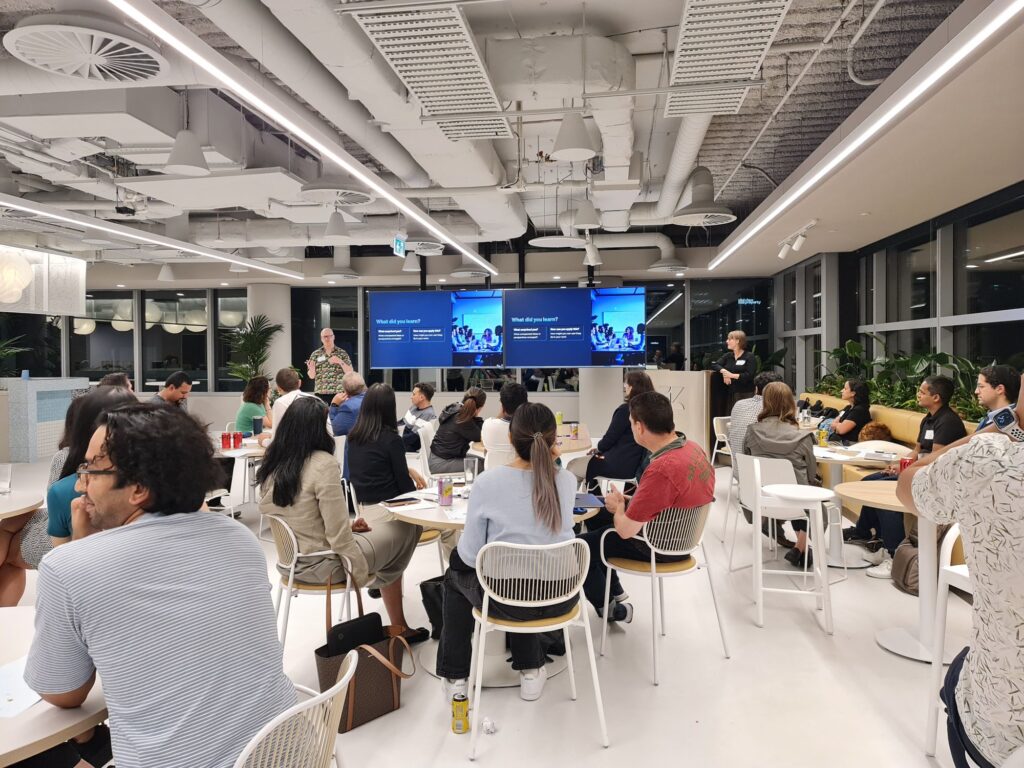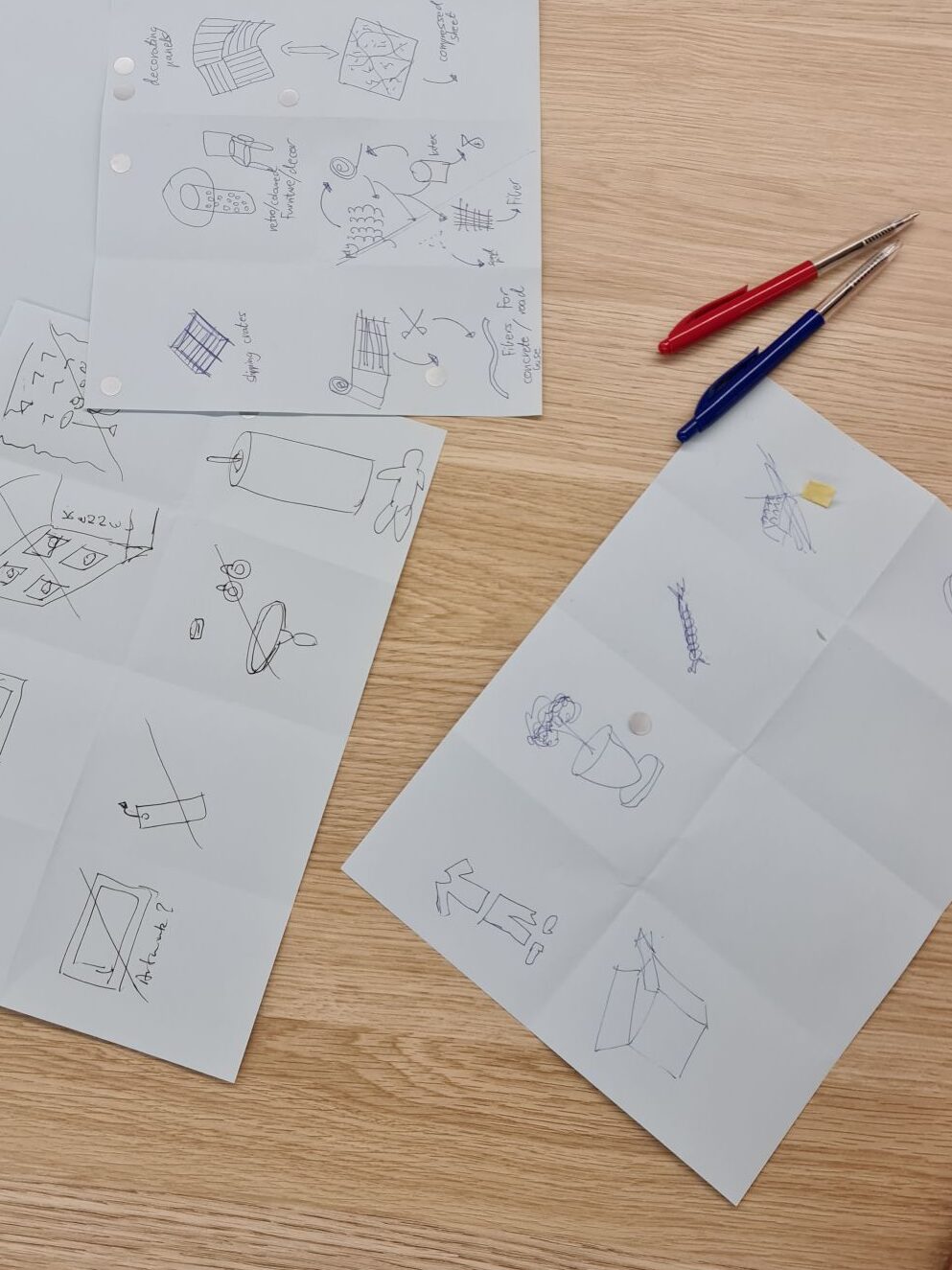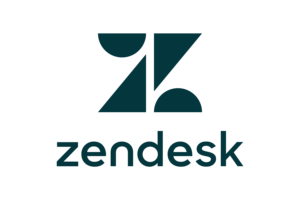
Our March meetup topic was ideation & collaboration – but the real focus was having small groups of attendees get hands on experience by using a specific method – Crazy 8s!
It was a super rainy night in Melbourne! Thank you everyone for attending – including a few folks who were absolutely drenched when they showed up!
The Talk
When we’re looking to innovate or problem solve, it’s easy to get stuck into our existing scenarios. How can we break out of this? How can we, and how can we help our teams, think in new ways?
One exercise that can be used to quickly come up with new ideas is Crazy 8s.

Crazy Eights is a brainstorming technique designed to rapidly generate a wide array of ideas within a constrained timeframe.
Lucy explained it’s a mix of convergent & divergent thinking plus has an element of prioritisation that helps you narrow scope. It’s a very time efficient method and that timeboxing helps you to not overthink ideas and focuses us to think outside the box.
Since Crazy 8s challenges individuals to sketch eight distinct ideas in eight minutes. This fast-paced exercise promotes quick thinking and minimises the tendency to dismiss unconventional ideas, fostering a creative and uninhibited environment. It’s especially useful for teams aiming to push the boundaries of conventional thinking and explore a broad spectrum of possibilities.
When to Use Crazy Eights
Lucy likes to use Crazy 8s when
- We know what we are doing but wondering how do we design the right thing in the right way
- When you have a lot of subject matter experts / stakeholders and want to include them
- When you are creatively blocked or not sure how to solve the problem
Benefits of Crazy Eights
Implementing Crazy Eights in brainstorming sessions offers several advantages:
- Encourages Creativity: The rapid pace and emphasis on quantity help bypass mental blocks, allowing creative ideas to emerge.
- Inclusive Participation: By providing a structured yet open framework, all team members can contribute, ensuring a diverse range of perspectives. The individual brainstorming assists with the ‘loudest voice in the room’ problem.
- Efficient Ideation: The time-boxed nature ensures that sessions are productive and focused, yielding a substantial number of ideas in a short period.
How to Conduct a Crazy Eights Session
- Divide into small groups of 3-4
- State your challenge: Make sure everyone knows what the problem or challenge you’re working on
- Prepare the Template: Surprise! There is no fancy ‘template’. Just take some paper and fold in so you have 8 boxes!
- Start the Timer: Allocate 1 minute for participants to sketch their idea. Do this 8 times so everyone has 8 sketches, ensuring a brisk and focused session. Even though people are divided up in groups, this is an individual task. AND sketching is the idea! Not words!
- Have each group share & discuss their sketches: Each person in the group explains their 8 sketches
- Each group should vote on the group’s ideas. What 1 idea would you like to move forward with?
- Time Management: Assign a timekeeper to provide regular updates, helping participants allocate their time effectively across all eight sketches.
- Iterate as Needed: Repeat the process to delve deeper into promising ideas or explore new directions.You can take the top 3 and continue to build on them. You can get all the groups to vote. Keep collaborating & iterating.
But wait! Before you start…
Steve and Lucy added a new twist to Crazy 8s as a warm up – first we needed to get out all the BAD ideas for the topics. Since this was a warm up – we did 4 minutes with a bad idea per minute. We needed to exorcise all those bad ideas!
You put down all the crazy stuff in there (we had lots of groups talk about burning things… hilariously). Interestingly, it’s good to put down ideas that have already been done – because that is a bad idea to pursue. People in each group shared their bad ideas with each other.This was good practice for the real session.

With a brand new A4 page (folded thrice) – we had 8 squares. Personally, I found the 6th box the hardest to fill – but that’s where real growth comes. And that includes the art of possible.
The best part is the voting mechanism – because that depends on what each group selects – which changes the outcomes as well. Another important aspect to remember when using this technique!
Resources:
Steve has posted on LI about his experience of using Gamma to create the presentation.
Slides are below
Our Speakers:
Lucy Serret is a passionate problem solver and inclusive design practitioner with 6 years of experience in agencies and startups. She specialises in end-to-end solutions, including research, design strategy, and accessible product delivery. Her commitment to accessibility, research, and design drives her to ask the big questions and challenge assumptions through creative problem solving
Steve Bauer is the Chief Product Officer at 1Breadcrumb, master of festivities at Product Camp Melbourne and owns many articles of clothing emblazoned with flamingos.
Our wonderful hosts and sponsor:
Zendesk started the customer experience revolution in 2007 by enabling any business around the world to take their customer service online. Today, Zendesk is the champion of great service everywhere for everyone, and powers billions of conversations, connecting more than 100,000 brands with hundreds of millions of customers over telephony, chat, email, messaging, social channels, communities, review sites and help centers. Zendesk products are built with love to be loved. The company was conceived in Copenhagen, Denmark, built and grown in California, now expanded all over the world.


